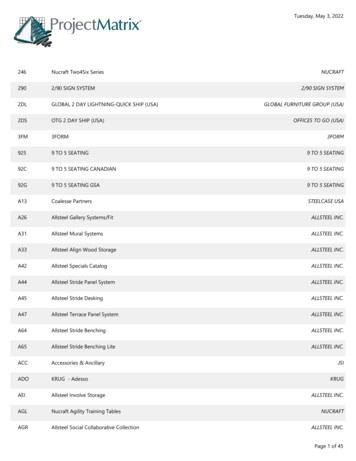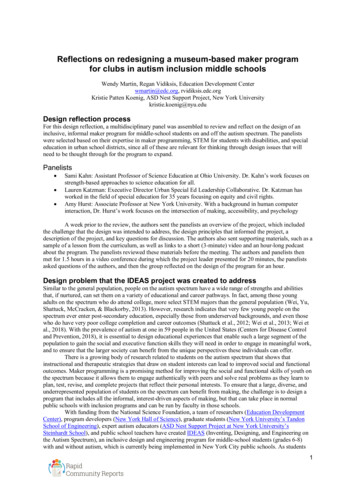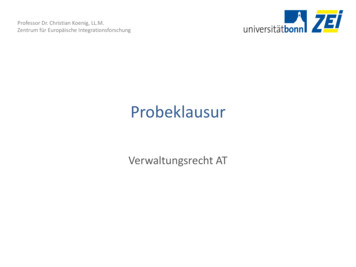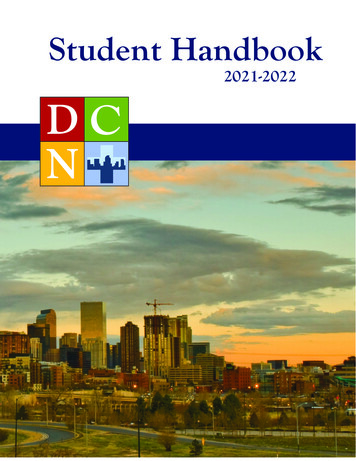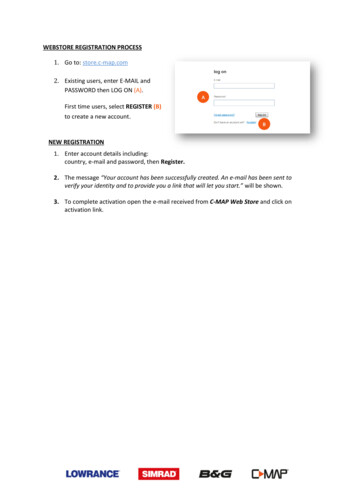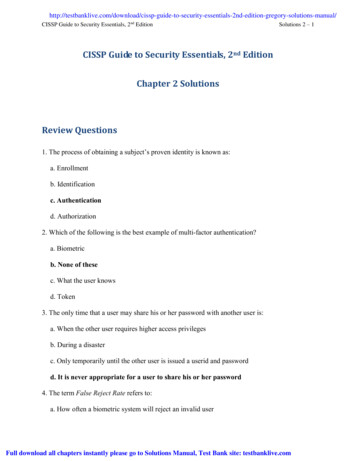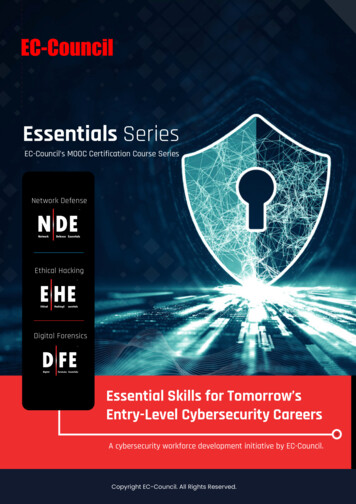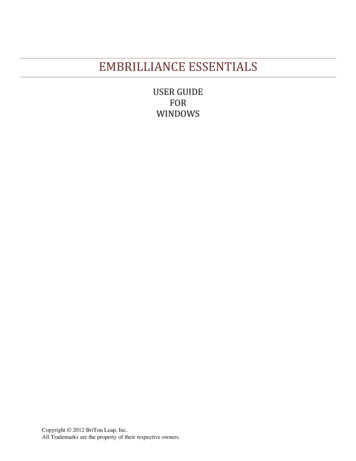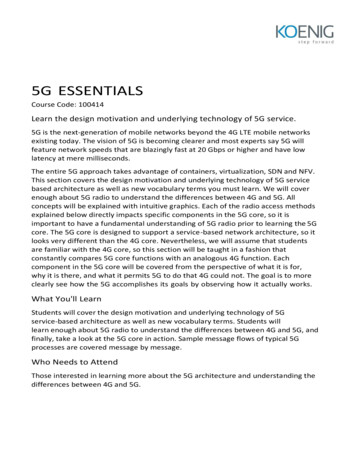
Transcription
5G ESSENTIALSCourse Code: 100414Learn the design motivation and underlying technology of 5G service.5G is the next-generation of mobile networks beyond the 4G LTE mobile networksexisting today. The vision of 5G is becoming clearer and most experts say 5G willfeature network speeds that are blazingly fast at 20 Gbps or higher and have lowlatency at mere milliseconds.The entire 5G approach takes advantage of containers, virtualization, SDN and NFV.This section covers the design motivation and underlying technology of 5G servicebased architecture as well as new vocabulary terms you must learn. We will coverenough about 5G radio to understand the differences between 4G and 5G. Allconcepts will be explained with intuitive graphics. Each of the radio access methodsexplained below directly impacts specific components in the 5G core, so it isimportant to have a fundamental understanding of 5G radio prior to learning the 5Gcore. The 5G core is designed to support a service-based network architecture, so itlooks very different than the 4G core. Nevertheless, we will assume that studentsare familiar with the 4G core, so this section will be taught in a fashion thatconstantly compares 5G core functions with an analogous 4G function. Eachcomponent in the 5G core will be covered from the perspective of what it is for,why it is there, and what it permits 5G to do that 4G could not. The goal is to moreclearly see how the 5G accomplishes its goals by observing how it actually works.What You'll LearnStudents will cover the design motivation and underlying technology of 5Gservice-based architecture as well as new vocabulary terms. Students willlearn enough about 5G radio to understand the differences between 4G and 5G, andfinally, take a look at the 5G core in action. Sample message flows of typical 5Gprocesses are covered message by message.Who Needs to AttendThose interested in learning more about the 5G architecture and understanding thedifferences between 4G and 5G.
5G ESSENTIALSCourse Code: 100414Virtual Classroom Live Outline1. 5G Introduction Introducing 5G Features What a 5G “Service” is not Introducing the 5G Network Architecture Comparing 5G to 4G2. Session and Service Continuity Session and Service Continuity (SSC) mode 1 and 2 Session and Service Continuity (SSC) mode 33. Message Queuing Message Queuing (MQ) in a Nutshell Defining 3GPP Exposure Subscribe and Publish Message Flow Embedding JSON in HTTP Messages4. The 5G Slice User Plane Function Why PFCP rather than OF (OpenFlow) N4 Interface - Packet Forwarding Control Plane Protocol (PFCP) Service Function Chaining (SFC) Architecture RFC 7665 Network Slicing Tunneling The GTP Tunnel PDU Session Types5. 5G Infrastructure 5G Changes to the Access Layer 5G Network Location of elements 1 of 5 5G Network Location of elements 2 of 5
5G Network Location of elements 3 of 55G E2E Latency Requirements5G Network Location of elements 4 of 55G Network Location of elements 5 of 56. Registration and Tracking Areas Registration and Tracking Areas Registration and Tracking Area Rules UE Moves to a new Tracking Area Network Slice within a Tracking Area Vertical and Horizonal Slices7. 5G Cloud Based Services Service operation naming Container-based Design of SBA (1 of 2) Container-based Design of SBA (2 of 2) HTTP Reverse Proxy HTTP/2 JSON JSON Algorithm8. 5G Services Namf UE Context in AMF (1 of 2) TS 23-502 Table 5.2.2.2.2-1 UE Context in AMF (2 of 2) TS 23-502 Table 5.2.2.2.2-1 NSSF NEF (1 of 2) NEF (2 of 2) NRF UDR Front End and UDC UDM UDM Subscriber Data Management Data Types AUSF Services PCF Services SMF Services9. 5G Stacks Transport NAS and SMS over HTTP PDU Session N2 Interface NG Application Protocol (NGAP) TS 38.413 Session Management Function N11 Interface Interworking with the EPC (TS 23.501 - 4.3.1.1)
10. EU and PDU Session States 5GMM main states in the UE 5GMM main states in the network UE PDU Session States SMF PDU Session States11. New Radio Sectors in New Radio Beamforming Pilot Signals Pilot Signals SU-MIMO vs MU-MIMO Pilot Contamination Pilot Contamination Solutions Densification 5G UE Radio Access Layers Small Cell Remote Radio Head Base Band Unit Common Public Radio Interface Centralized Radio Access Network (C-RAN) To CPRI or not to CPRI? Functional Split AAU, DU, and CU using the Option 2 Functional Split Cloud-RAN12. Multi-access Edge Computing 8 Network Function Virtualization Components Why Two Bridges? Simple NFV (Network Function Virtualization) Example OVS-based openstack “wiring” MEC Reference Architecture in a NFV Environment Mobile Edge Computing to Multi-access Edge Computing13. Priority Paging and QoS Paging Policy Differentiation (PPD) Network Triggered Service Request QoS Profile QoS Flow Marking Service Data Flow (SDF) Filter 5QI (QoS Flow ID) enhanced Multi-Level Precedence and Pre-emption service (eMLPP)14. 5G Flow Diagrams PDU Session Establishment (1 of 4) PDU Session Establishment (2 of 4)
PDU Session Establishment (3 of 4)PDU Session Establishment (4 of 4)Registration 1 of 3Registration 2 of 3Registration 3 of 3QoS Triggered PDU Modification (1 of 3)QoS Triggered PDU Modification (2 of 3)QoS Triggered PDU Modification (3 of 3)
13. Priority Paging and QoS Paging Policy Differentiation (PPD) Network Triggered Service Request QoS Profile QoS Flow Marking Service Data Flow (SDF) Filter 5QI (QoS Flow ID) enhanced Multi-Level Precedence and Pre-emption service (eMLPP) 14. 5G Flow Diagrams PDU Session Establishment (1 of 4)
